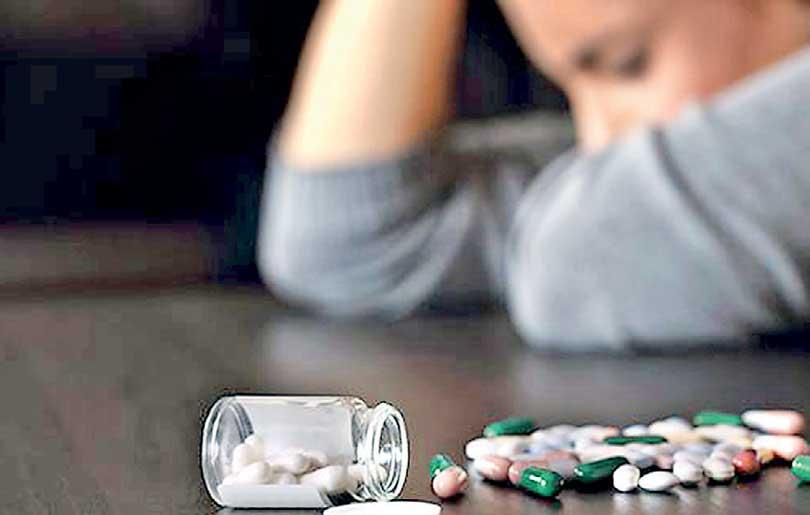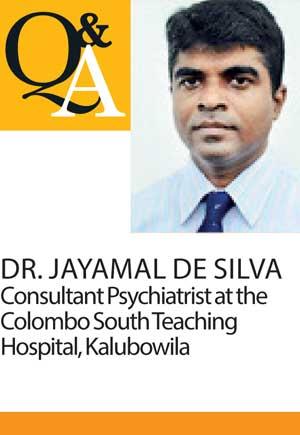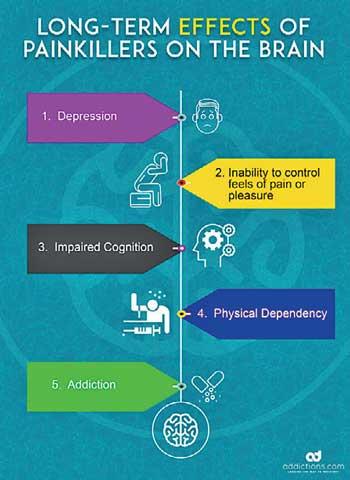26 Apr 2019 - {{hitsCtrl.values.hits}}

 Addiction to, overdose and abuse of painkillers are not an uncommon nor unheard of phenomenon in the current society. From heart-break to social acceptance, these practices have disturbingly found their place in society, particularly within the impressionable youth. Moreover, most people justify these detrimental habits and beliefs based on medical information freely found online.
Addiction to, overdose and abuse of painkillers are not an uncommon nor unheard of phenomenon in the current society. From heart-break to social acceptance, these practices have disturbingly found their place in society, particularly within the impressionable youth. Moreover, most people justify these detrimental habits and beliefs based on medical information freely found online.
Human nature tends to make certain choices in spite of obvious repercussions, so blaring out consequences and after-effects is no longer an effective counter-measure. In reality, the task of understanding abuse, addiction and overdose of prescription painkillers goes beyond biochemistry.
Thus unmasking the true nature of this adversity and examining the heart of the issue, Dr. Jayamal De Silva, Consultant Psychiatrist at the Colombo South Teaching Hospital, Kalubowila and Senior Lecturer in Psychiatry, Faculty of Medical Sciences, University of Sri Jayawardenepura spoke to the Health Capsule.
Purpose of painkillers
 “Painkillers are prescription medication used to help with chronic pain. They will alter the biochemistry of the brain in a manner that will reduce the perception of pain and some of them have an action at the site of the tissue damage as well. It will not reduce pain immediately, for it may sometimes take a few days for them to start acting. The pain threshold is then brought up and the conduction of the neuronal impulses are slowed down so that perception of pain is lowered and the patient is relieved,” Dr. De Silva explained.
“Painkillers are prescription medication used to help with chronic pain. They will alter the biochemistry of the brain in a manner that will reduce the perception of pain and some of them have an action at the site of the tissue damage as well. It will not reduce pain immediately, for it may sometimes take a few days for them to start acting. The pain threshold is then brought up and the conduction of the neuronal impulses are slowed down so that perception of pain is lowered and the patient is relieved,” Dr. De Silva explained.
Addiction
“If you divide painkillers into two types, we have ones like Paracetamol and Ibuprofen which are not particularly addictive and if taken appropriately as prescribed would reduce acute physical pain. The other group includes medications such as opioids like heroine which are generally associated with physical and psychological addiction,” shared Dr. De Silva.
Delving into the psyche of addiction, he added that, “if you take actually physically ill people, most of them do not get addicted, because the doctors control the dosage and properly educate the patient. However addiction to prescribed pain killers are seen more commonly at present compared to the past. What has happened is these painkillers have become cheap drugs and people who are already addicted to them have created a false image about them. The dealers also sell them to the youth without a prescription.”
According to him, as opposed to popular opinion, falling victim to opioids like heroine or morphine isn’t a pleasurable experience. The association of fulfillment and indulgence with these painkillers is a false representation of the actual forces driving addiction.
“What actually happens is, someone offers these things. The current users want to recruit new users due to financial motives. They use them to fund their needs and take care not to share the nasty aspects that are well known to the current user; that once you get addicted, you would continue to use it despite the lack of enjoyment. Whether it’s their first, sixth or the hundredth time, most do not find enjoyment through it. Instead, they become psychologically and physically dependent on it.” However, contrary to popular belief, most first time users never develop an addiction.
It is the combination of peer pressure, environment and the expectation of certain results by the user himself that is falsely interpreted as a sense of pleasure. An unattainable reaction is longed for. So any sensation is interpreted as joy owing to their environmental influence and the effect of expectation. Some describe this as the placebo effect in literature. The secrecy, feelings of rebellion, approval of peers and spirit of celebration associated with the practice, whether at a party or on a trip, mask its true nature. Changes like lethargy, discoordination and drowsiness are then perceived by the user to be ‘the expected effects’. Fear of reporting actually felt effects or sensations is guaranteed due to the created micro-culture of the users. This is common in the case of both licit and illicit substances.
Expected effect vs. actual effect
Testing a substance happens in a quite contrasting manner to the testing of pharmaceutical drugs for their effects. The real experiment in drug testing takes place as a double blind test in which the user and the administrator would both be unaware of who got which. The effects are then gauged against a non-drug or a placebo under controlled conditions.
Take for example a way of testing the effects of alcohol.
“If we give someone alcohol without informing them that it is alcohol (for example, using saline bottle and a line, that means directly to a vein), the outcome would be quite different from the behaviour of someone consuming alcohol at a party. The actual chemical effect of alcohol is cerebral depression and fever-like physical effects would be experienced. But we all take alcohol during pleasure situations and in such an encouraging environment this experiment is not allowed to occur. But if we were to drink alone in a room and wait for the pleasure to kick in, we realise it would never happen,” Dr. De Silva described.
By these examples he established that no inherent chemicals are solely responsible for this supposed addiction. The dependency lies in the environment in which it is consumed.
Recovery
According to Dr. De Silva, the majority of addicted cases withstand the withdrawal symptoms and recover without external aid, naturally and safely. Most cases do not even require counselling. Withdrawal is something most users deal with on a daily basis when they run out of supply (or money). The path to recovery may easily be walked by one’s own willpower and determination.
Hence making perfectly capable people believe that they require treatment and medication damages their self-efficacy and self-confidence and psychological strength. “Apart from opioids or morphine like drugs, there exists other types of drugs which are prescribed for pain and neurological disorders. These have a potential of giving rise to some dependence due to their nature similar to sleeping pills. There are unfortunately some doctors who prescribe these types for drug addicts who have the capacity to recover from their habits without any medical assistance. This then leads to the iatrogenic problem of these people seeking specialised drugs in street pharmacies,” Dr. De Silva shared.
An overdose
 With regard to Overdoses, we often hold psychiatric illnesses accountable, however the more common reasons of overdose are relatively subtler.
With regard to Overdoses, we often hold psychiatric illnesses accountable, however the more common reasons of overdose are relatively subtler.
“An inadvertent reason for overdose is when people exceed the recommended dosage believing that the effect would be more,” Dr. Jayamal said. The fact that patients go beyond doctors’ advice and increase their drug intake expecting faster or better results is a subverted issue.
“Continuous intake of over-the-counter painkillers without being advised by a medical practitioner is also harmful. This can cause chronic damage to the kidney and other organs,” Dr. Jayamal added referring to even common tablets like Paracetamol which we carelessly prescribe for ourselves.
For numerous reasons, some people overdose in order to inflict harm upon themselves. Around the world, the youth seem to have been exposed to this phenomena through media and the environment, creating ‘an overdose culture’ of sorts.
In the instance of an overdose
“Most of the prescribed medication would do no harm if you make them vomit immediately and everything leaves the system, but if the patient is drowsy do not attempt this because he or she may aspirate it. Immediately rush the patient to the nearest hospital and get medical advice because it is possible that a cocktail of drugs were taken, causing unpredictable reactions. The doctors would then, if possible, neutralise the drug in some way or else remove the drug out of the body.”
Dr. De Silva explained that judging by the situation the doctors would implement the best suited specialised procedure; thus highlighting the importance of seeking immediate medical assistance at such an instance.
It is unacceptable that painkillers are normalised as a symbol of youth and enjoyment and subjected to abuse, addiction and overdose when in fact reality is bitter and far from pleasurable. At the core of the complexity of this multi-fold issue lies a very simple root cause: the ease of access. There are certain commonly abused, potentially lethal drugs readily dispensed over-the-counter when there are thousands of people who attempt deliberate self-harm using these substances.
“Paracetamol is a potential killer. With a sufficient overdose you may lose your liver and within two weeks you will die. But its a very painful prolonged death. Despite this, absolutely anyone can walk into a supermarket and buy a packet of Paracetamol containing close to 150 tablets.”
Raising awareness on the danger of misused prescription drugs is fruitless when society accommodates them in this manner. It is therefore in the hands of responsible education, effective conversation that doesn’t promote these practices and trusting medical professionals and their prescriptions that will back-pedal the dilemma.
Continuous intake of over-the-counter painkillers without being advised by a medical practitioner is also harmful. This can cause chronic damage to the kidney and other organs,” Dr. Jayamal added referring to even common tablets like Paracetamol which we carelessly prescribe for ourselves
22 Dec 2024 37 minute ago
22 Dec 2024 2 hours ago
22 Dec 2024 2 hours ago
22 Dec 2024 5 hours ago
22 Dec 2024 5 hours ago